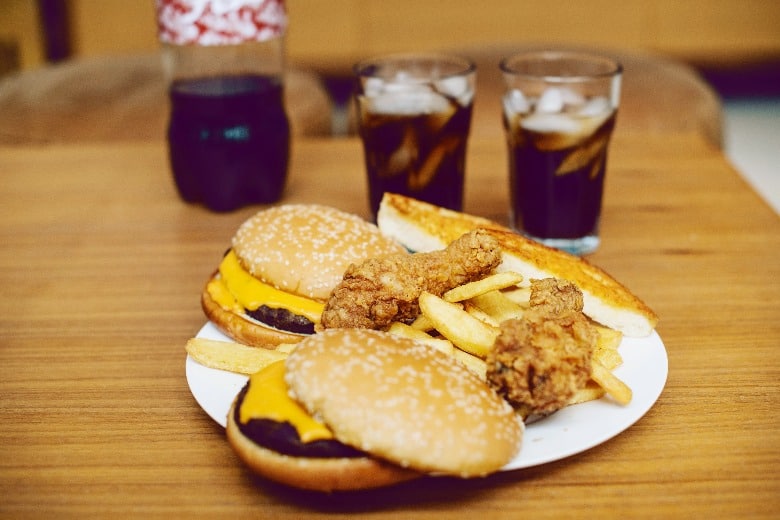I have been on or tried just about every low-calorie diet there is.
I’ve even tried diet pills prescribed by my doctor, only to have the weight come back and bring some friends along.
Turns out, it wasn’t the calories I should have been worried the most about but what kinds of food I was putting into my body, namely carbohydrates.
I began to research how cutting carbs might help start my new health journey.

Understanding Carbs
About 50 years ago, a paper called the Seven Continents Study changed the way we think about our diet.
It found that countries with high-fat diets were more inclined to health issues such as heart disease and had a higher mortality rate from heart-related issues.
This study was one of the first to look at the link between diet, lifestyle, and causes of disease and death.
At first glance, it appears to be a clear-cut correlation. However, time and further research have revealed that the study was too narrow in its areas of data.
It looked only at countries with the correlation Ancel Keyes was looking for and did not include data from countries that did not prove his hypothesis.
This study became one of the reasons for the original USDA food pyramid, where carbs are the enormous base, and fat the tiny triangle on top.
It was around the time of this adoption that obesity began its rise in most modern countries, including America.
Where Do Carbs Fit in Your Diet?
Carbohydrates are one of the fuels your body uses for healthy functioning.
Once consumed, carbs are turned into simple sugars that then trigger a release of insulin from the pancreas.
Insulin is the hormone that moves the sugar into the cells, where it can then be used for energy.
The current recommendation for carb intake is almost 50% of your daily calorie requirement.
That can be more than 250 grams of carbs per day. Most commonly eaten carbohydrates include:
- bread
- pasta
- processed meals
- cereal
- vegetables
- fruit
Finding your specific carbohydrate intake level will vary from person to person.
However, a low carb diet would have only about 10% of the daily recommended allotment, including cycling carb diets where one might “carb-up” at different points.
Your tolerance to carbs depends on age, gender, activity, and current health.
People who are physically active can eat more carbs that someone who sits at a desk for most of the day. Carb resistance also changes with diseases like Type II diabetes.
Good Carbs vs. Bad Carbs
Carbohydrates are part of most foods. They are part of vegetables and grains, in differing amounts.
The common factor for deciding whether a carb is good or bad lies in its fiber content. Fiber comes only from plant matter.
Fiber helps slow the digestion of carbs and can even lead a feeling of being fuller, longer. Fiber may even help reduce the risk of heart disease.
It is almost impossible to escape carbohydrates altogether, but the good news is that all carbs are not created equal.
You can use a tool like the glycemic index to determine the good, the bad, and the ugly of the carbohydrate world.
Glycemic Index
The glycemic index is ranking of the carb content of foods according to how quickly they affect glucose levels of the blood.
The lower the number on the GI scale, the slower the food is digested and metabolized.
The GI can help you in cutting carbs from your diet.
The ranking system will allow you to choose foods that you will enjoy without raising your blood sugar, causing cravings after the sugar drops.
The Good
There are many foods that contain carbohydrates but have a very low impact on blood sugar and insulin production.
You might even think of them as ‘slow’ carbs since the body has to work to get to them.
This includes an enormous category of foods that are also high in fiber that has to be broken down in addition to the carbohydrates.
Vegetables
Everyone knows that vegetables are good for you.
Not only do they contain most of the nutrients, vitamins, and minerals you need for a healthy body but they aren’t likely to be full of chemicals and preservatives to prolong shelf life.
If you examine the nutrition label on a bag of salad mix, you’ll notice that you have to eat a few such bags to go over the recommended 2000 calorie limit for your day.
Fruits
Think of fruits as nature’s candy, along with all the sugar that implies.
Many fruits have the sugar equivalent of chocolate bars but they usually have the fiber found in skins and other parts to make the body work to digest them, thus slowing the entry of those sugars into the bloodstream.
Eating whole, unprocessed fruit is the best way to get the most benefit. Avoid fruit juices that remove the material that make fruit good for you.
And remember that much like carbs, not all fruit is created equal. The higher the carbohydrate count, the more sugar you put into your body.
Whole Grains
Grains are generally composed of three parts: the bran (the outer shell rich with vitamins), the germ (a small, nutrient dense core), and endosperm (middle layer with carbohydrates and proteins).
Refinement leads to the removal of all but the endosperm, creating a food that is quickly digested and stimulates the body’s insulin response fairly easily.
It can be difficult to find a grain that hasn’t been refined in some way without grinding your own wheat flour at home.
However, the less refined a grain is before it goes into a baked good, the better it is.
These grains are often the first choice for anyone trying to watch their eating by reducing calories and fat.

The Bad
Some foods start out in nature in a form that still includes fiber or parts that are harder for the body to digest.
Then along comes Man to ‘refine’ those carbohydrates, or to take out everything that makes it healthy and leave nothing but easily metabolized carbs and sugars behind.
Refined Carbs
The refining process is what leads to the white flour that you find in bread, cereal and just about any snack food you can imagine.
White flour has had everything removed, including vitamins and minerals.
In fact, most foods made with refined flour have to have to be fortified to return some of the health benefits it came out of the ground with.
With so much of healthy parts missing, these become ‘fast’ carbs that are processed easily into sugar.
Some common examples include:
- white flour
- white bread
- white rice
- pastries
- sodas
- pasta
- sweets
- breakfast cereals
- fruit juices
The Ugly
Sugar in all its forms. White sugar, brown sugar, cane sugar, sucrose…whatever name it goes by on the label, it should be avoided.
Most sugar serves as nothing more than a cheap, empty filler, as evidenced by the sheer number of products that contain high fructose corn syrup.
You may feel like you need a degree in organic chemistry to decipher all the ingredients found on a label, but your health will be better for knowing sugar in all its forms.
The presence of sugar in the blood stimulates the insulin response.
Unfortunately, most of us do not need to use that much energy and so it is stored as body fat, in case of future starvation.
Repeated exposure can lead to metabolic disorders such as insulin resistance. This can also lead to related issues of high cholesterol and cardiovascular disease.
Carbs and Weight Loss
The effects of carbohydrate intake on weight loss is a hotly debated and studied topic right now.
With obesity and weight-related diseases on the rise, a lot of people are searching for the way that will impact their overall health in a proven way.
Carbohydrates are at the forefront of this debate since they are the primary source of energy in the standard American diet.
However, we eat more carbs than our bodies can ever use. Advancements in technology have led to a more sedentary society with access to more food than they need.
If you cut out too many carbs, you start to feel tired and lethargic, not to mention hungry.
A high carb diet also leads to metabolic disorders such as insulin resistance, since the body is constantly flooded with insulin to transport sugar, but the energy is never used.
A low carbohydrate diet is designed to combat issues such as fatigue and hunger.
It replaces fast carbs with vegetables that are high in fiber and proteins and fats to add calories with more value.
Studies have shown that people who are cutting carbs from their diet have lower cholesterol levels, greater fat loss, and are more likely to continue with the diet than those who are strictly low-fat/low calorie.
Low-Carb Diets
If you’re looking at cutting carbs in order to lose weight or to improve your overall health, then you want to do your homework.
Just as low carb diets are different from the standard American diet, there are even different types of low carb diets.
With low carb diets, you are not counting calories but setting a total goal for carbohydrates. You can choose to count total carbohydrates or net total.
The net total is the number of carbohydrates minus fiber and any sugar alcohols.
Cutting carbs by counting net grams may afford you a greater quantity of food and a better variety.
Low Carb/High Fat
Diets such as the ketogenic diet are low in carbohydrates, allowing about 20 grams daily.
This doesn’t change and the primary fuel for your body will be dietary fat from organic meats and vegetables.
This forces your body to use the fat to create ketones, which replace glucose as the primary energy source.
Low Carb/Moderate Fat
The purpose of this diet is still to reach the process of ketosis, but without using fat as your primary source of calories.
You begin with 20 grams of carbohydrates, forcing your body to convert body fat into ketones for energy.
Unlike a high-fat diet, you use them sparingly and instead rely on protein to curb hunger.
Some low carb diets encourage you to add on further carbohydrates by adding more varied vegetables until you find the amount at which you either continue to lose weight or maintain.
Carb Cycling
This particular type of a low carb diet is generally preferred by athletes who do an extreme amount or a very intense kind of exercise.
You choose the days on which you want to be ‘high’ carb and trade with low carb days.
This does not mean to go back entirely to your previous way of eating. You still need to eliminate processed carbs and sugar from your diet.
Adding carbs means to add various types of vegetables that have a higher carb content.
Final Thoughts
Obesity is on the rise, all over the world, and many leaders of the scientific community are looking at carbohydrates as the culprit.
Not just any carbohydrate though, all those empty carbs that we buy from the vending machine or drink by the hour.
Good news is that new studies are showing that cutting carbs can improve not only your weight but a host of other issues that are related to obesity.
Adding more vegetables and less processed food can get you set on a path to a more healthy you.



